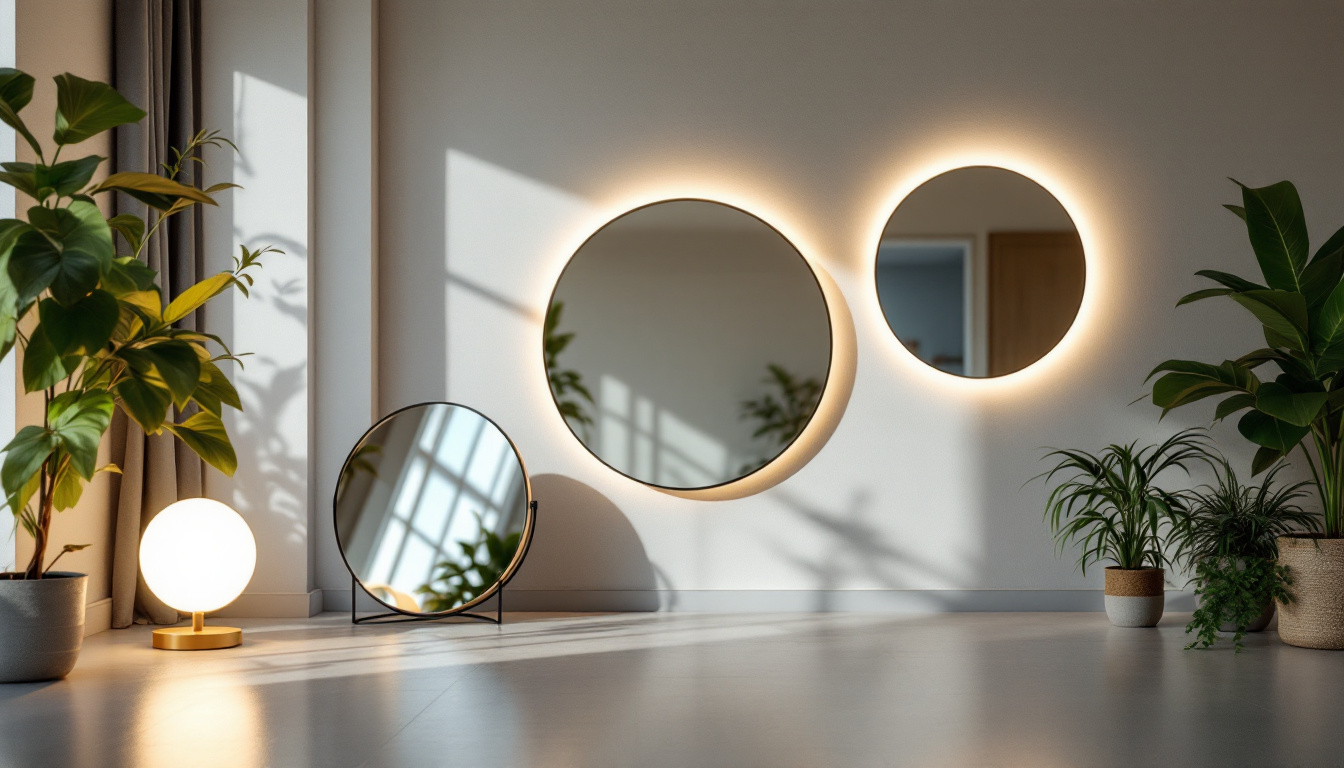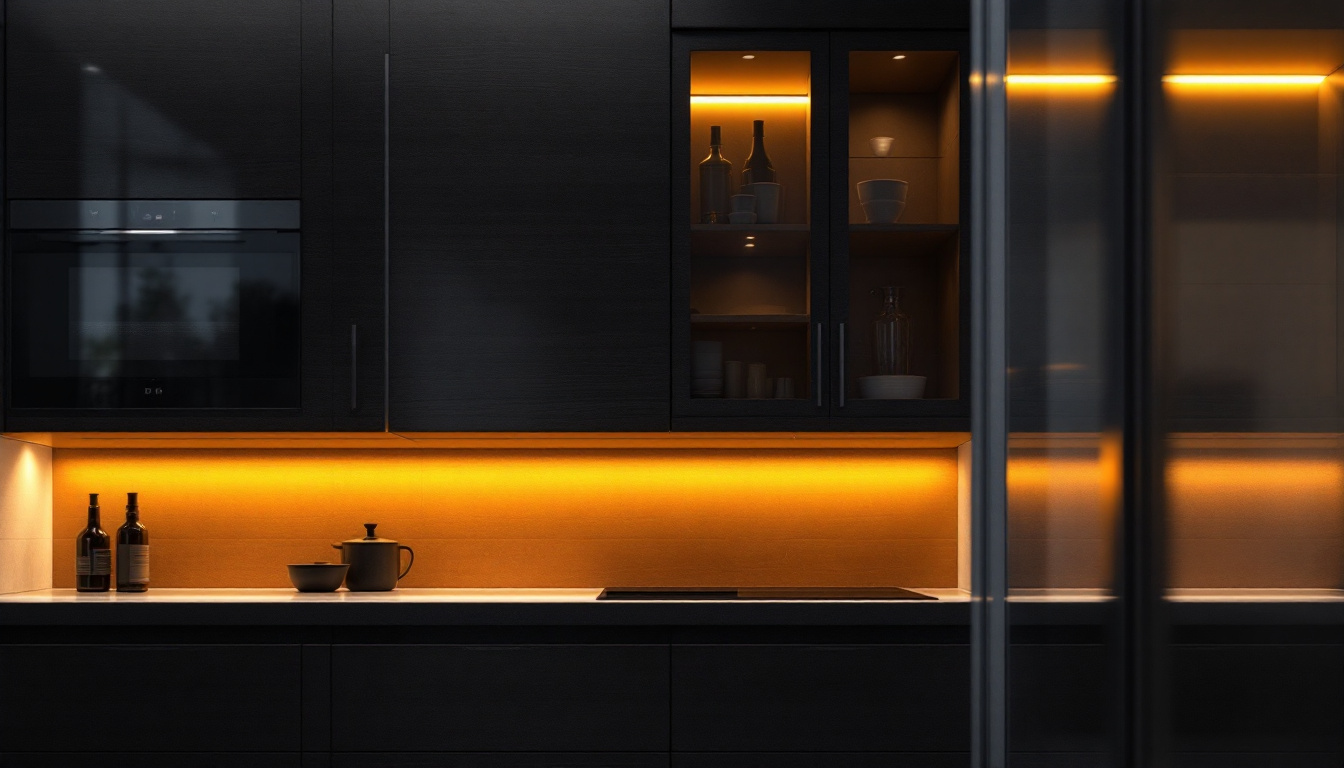
In the ever-evolving world of lighting design, the use of light mirrors has emerged as a pivotal element for creating visually stunning and functional spaces. For lighting contractors, understanding the nuances of light mirrors is essential not only for enhancing aesthetic appeal but also for optimizing lighting efficiency. This article delves into the various aspects of light mirrors, their types, applications, and best practices that every lighting contractor should be well-versed in.
Light mirrors are specialized mirrors designed to reflect and manipulate light in various ways. Unlike standard mirrors, which primarily serve a decorative purpose, light mirrors are engineered to enhance illumination and improve the overall ambiance of a space. Their reflective properties can significantly influence how light interacts with surfaces, making them a key component in both residential and commercial lighting designs.
The effectiveness of light mirrors lies in their ability to reflect light efficiently. The angle of incidence, which is the angle at which incoming light strikes the mirror, plays a crucial role in determining how much light is reflected. High-quality light mirrors are designed to minimize absorption and maximize reflection, ensuring that the light is directed where it is needed most.
Moreover, the type of coating used on the mirror’s surface can affect its reflective properties. Silver and aluminum are common materials used in light mirrors, each offering different levels of reflectivity and durability. Understanding these materials allows contractors to choose the right mirror for specific applications, enhancing both the functionality and aesthetic of the lighting design. Additionally, advancements in technology have led to the development of specialized coatings that can enhance the performance of light mirrors even further. For instance, some mirrors now feature anti-reflective coatings that reduce glare and improve visibility, making them ideal for environments where clarity is paramount.
There are several types of light mirrors available, each serving a unique purpose in lighting design. Familiarity with these types can help contractors make informed decisions based on the specific needs of a project.
In addition to these common types, there are also specialized light mirrors designed for specific applications, such as light therapy mirrors used in wellness and beauty treatments. These mirrors often incorporate LED technology to provide a spectrum of light that can enhance skin tone or promote relaxation. As the understanding of light’s impact on mood and well-being grows, the use of specialized light mirrors in personal care and health settings is becoming increasingly popular, further expanding the role of mirrors in our daily lives.
The versatility of light mirrors makes them suitable for a wide range of applications. From enhancing the ambiance of residential spaces to improving functionality in commercial settings, the right mirror can transform a lighting design.
In residential settings, light mirrors can significantly enhance the atmosphere of a home. They can be strategically placed in living rooms, dining areas, and bathrooms to create an illusion of space and brightness. For instance, a well-placed mirror can reflect natural light from a window, making a room feel larger and more inviting.
Moreover, mirrors can be incorporated into lighting fixtures themselves, such as in wall sconces or decorative chandeliers. This integration not only enhances the aesthetic appeal but also improves the distribution of light, creating a warm and welcoming environment. Additionally, the use of mirrors in hallways can help brighten these often-overlooked spaces, making them feel more open and inviting. Mirrors can also serve as focal points in a room, drawing attention to artwork or architectural features, thereby enhancing the overall design scheme.
In commercial spaces, the role of light mirrors becomes even more critical. They can be used to optimize lighting in retail environments, enhancing product visibility and encouraging customer engagement. By reflecting light onto merchandise, mirrors can create a more vibrant shopping experience.
Furthermore, in office settings, mirrors can help improve the overall lighting quality, reducing the need for excessive artificial lighting. This not only saves energy but also contributes to a healthier work environment by minimizing glare and creating a more comfortable atmosphere for employees. The strategic placement of mirrors in conference rooms can also enhance collaboration by ensuring that all participants are well-lit and visible, fostering better communication. In hospitality settings, such as hotels and restaurants, mirrors can be utilized to create a sense of luxury and sophistication, enhancing the overall guest experience while also allowing for creative lighting designs that adapt to different moods and times of day.
While the benefits of light mirrors are clear, there are several best practices that lighting contractors should follow to ensure optimal results. These practices not only enhance the effectiveness of the mirrors but also contribute to the overall success of the lighting design.
The placement and orientation of light mirrors are crucial factors that can significantly impact their effectiveness. Mirrors should be positioned to maximize the reflection of light, avoiding angles that may lead to glare or uneven lighting. For instance, placing a mirror opposite a light source can help distribute light more evenly throughout a room.
Additionally, considering the height at which mirrors are installed is important. In residential settings, mirrors should be placed at eye level to create a more engaging experience, while in commercial environments, they may need to be positioned higher to accommodate larger spaces and varying ceiling heights.
The finish of a light mirror can greatly influence its performance. Mirrors with a high-gloss finish tend to reflect more light, making them ideal for spaces that require maximum brightness. Conversely, matte finishes can help diffuse light, creating a softer ambiance.
Contractors should also consider the surrounding decor when selecting a mirror finish. A cohesive design can enhance the overall aesthetic, making the space feel more harmonious and inviting.
To ensure longevity and optimal performance, regular maintenance of light mirrors is essential. Dust and dirt can accumulate on the surface, diminishing their reflective properties. Contractors should recommend a cleaning schedule to clients, emphasizing the use of non-abrasive cleaners that won’t damage the mirror’s surface.
Furthermore, checking for any signs of damage, such as cracks or discoloration, is important. Damaged mirrors not only affect the quality of reflection but can also pose safety risks, especially in high-traffic areas.
The lighting industry is constantly evolving, and light mirrors are no exception. Several innovative trends are shaping the future of light mirrors, providing exciting opportunities for lighting contractors.
Smart mirrors are gaining popularity, integrating advanced technology to enhance functionality. These mirrors can feature built-in lighting, touch controls, and even smart home connectivity, allowing users to adjust lighting settings with ease. For contractors, incorporating smart mirrors into designs can elevate the overall experience for clients, offering modern solutions that cater to contemporary lifestyles.
Moreover, smart mirrors can be equipped with sensors that adjust lighting based on the time of day or the presence of individuals in the room. This not only enhances convenience but also contributes to energy efficiency, aligning with the growing demand for sustainable solutions in lighting design.
As sustainability becomes a priority in the design industry, the use of eco-friendly materials in light mirrors is on the rise. Manufacturers are exploring alternatives to traditional materials, such as recycled glass and sustainable coatings, to create mirrors that are both functional and environmentally friendly.
Contractors should stay informed about these developments, as clients increasingly seek sustainable options. By offering eco-friendly light mirrors, contractors can differentiate themselves in a competitive market and appeal to environmentally conscious consumers.
Light mirrors are an essential component of modern lighting design, offering both aesthetic and functional benefits. For lighting contractors, understanding the various types of light mirrors, their applications, and best practices is crucial for delivering exceptional results. As the industry continues to evolve, staying abreast of innovative trends will further enhance the ability to meet client needs and exceed expectations.
By embracing the potential of light mirrors, contractors can transform spaces, create inviting atmospheres, and ultimately contribute to the success of their projects. Whether in residential or commercial settings, the strategic use of light mirrors can elevate lighting design to new heights, ensuring that every space is illuminated beautifully and efficiently.
Ready to take your lighting projects to the next level with the finest light mirrors on the market? Look no further than LumenWholesale, where we provide lighting contractors with superior, spec-grade lighting products at unparalleled wholesale prices. Our commitment to quality and affordability ensures that you have access to an extensive selection of reliable lighting solutions that meet the highest industry standards. Plus, with the convenience of free shipping on bulk orders, you can enjoy premium lighting without the hassle of hidden fees. Elevate your lighting designs today and experience the best value in wholesale lighting by visiting LumenWholesale.

Discover why LED tape cabinet lighting is becoming a must-have for lighting contractors.

Discover how fan and light control switches are revolutionizing the work of lighting contractors by enhancing energy efficiency and simplifying installations.

Discover innovative cost-saving strategies for lighting contractors in “Liht Bulbb.” This article explores practical tips and industry insights to enhance efficiency and profitability in your lighting projects.

Discover how a LED light factory drives innovative, energy-efficient lighting solutions.